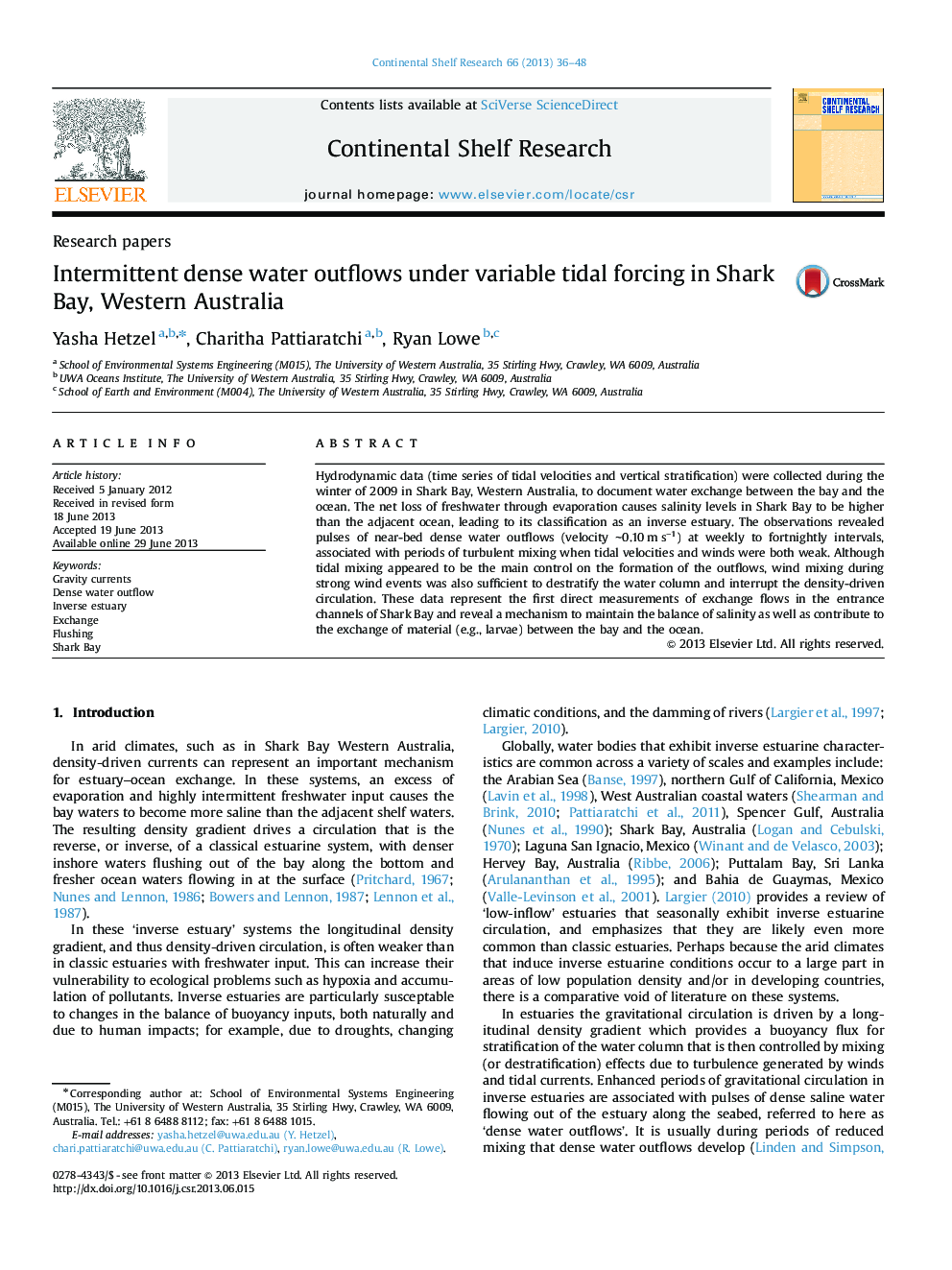| Article ID | Journal | Published Year | Pages | File Type |
|---|---|---|---|---|
| 6383282 | Continental Shelf Research | 2013 | 13 Pages |
Abstract
Hydrodynamic data (time series of tidal velocities and vertical stratification) were collected during the winter of 2009 in Shark Bay, Western Australia, to document water exchange between the bay and the ocean. The net loss of freshwater through evaporation causes salinity levels in Shark Bay to be higher than the adjacent ocean, leading to its classification as an inverse estuary. The observations revealed pulses of near-bed dense water outflows (velocity â¼0.10 m sâ1) at weekly to fortnightly intervals, associated with periods of turbulent mixing when tidal velocities and winds were both weak. Although tidal mixing appeared to be the main control on the formation of the outflows, wind mixing during strong wind events was also sufficient to destratify the water column and interrupt the density-driven circulation. These data represent the first direct measurements of exchange flows in the entrance channels of Shark Bay and reveal a mechanism to maintain the balance of salinity as well as contribute to the exchange of material (e.g., larvae) between the bay and the ocean.
Related Topics
Physical Sciences and Engineering
Earth and Planetary Sciences
Geology
Authors
Yasha Hetzel, Charitha Pattiaratchi, Ryan Lowe,
